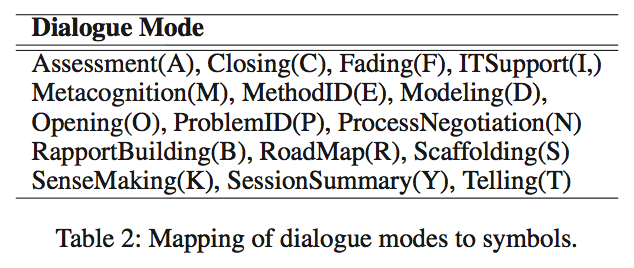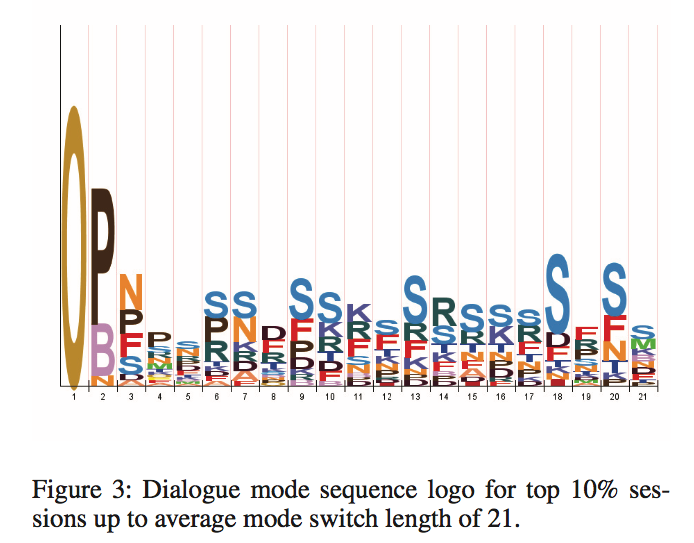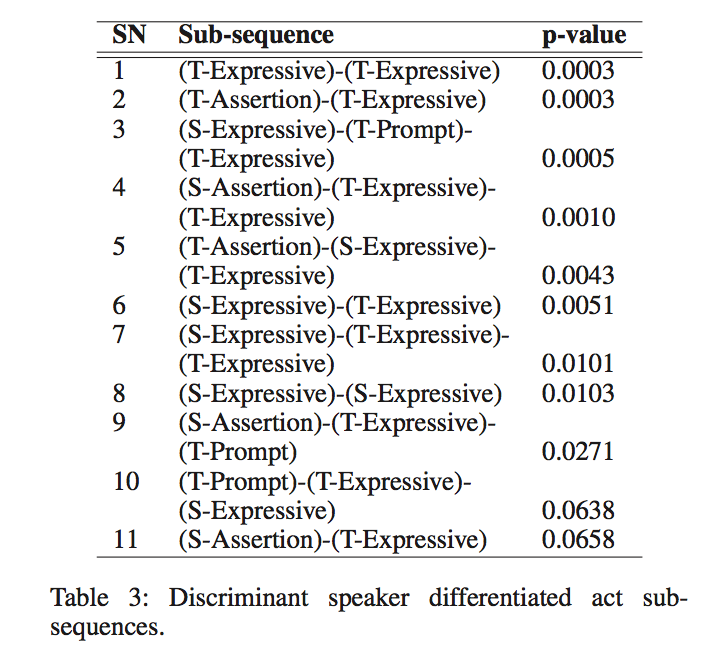Discovering Effective Tutorial Strategies in Human Tutorial Sessions
Discovering Effective Tutorial Strategies in Human Tutorial Sessions Nabin Maharjan, Vasile Rus, Dipesh Gautam, FLAIRS-31
A key research question in the intelligent tutoring systems (ITSs) community is
What effective turorial strategies are employed by expert tutors that induce learning gains?
Common approaches are
- Study strategies guided by sound pedagogical theories
- Study strategies employed by expert tutors
Many research studies conducted using the pedagogical theory approach e.g. Cognitive Tutor, Deep Tutor etc. Discover strategies from expert tutors through manual or automated pattern analysis of large recorded tutoring data.
Data Corpus
Authors used a large corpus of about 19K tutorial sessions. Tutorial sessions between professional human tutors and college-level, adult students collected via online tutoring service on Math 208 and Math 209 subject. They randomly selected a subset of 500 tutorial sessions for annotation. Annotaeted data contains 31,299 utterances.
Dialogue Taxonomy
Tutorial strategies are patterns in terms of actions of a tutor and a tutee. Authors developed their coding taxonomy to represent such actions in terms of dialogue acts, sub-acts and modes.
Dialogue acts are inspired from language-as-action theory:
When we say something, we do something.
Dialogue act is a language construct that captures the general intent or action underlying speaker’s utterance. For example:
- “Hello”: a greeting action
- “Could you please pass me the book?”: a request action
- “There is an useful idea called conservation of energy”: an assertion action
Sub-acts combined with dialogue acts can capture finer subtleties associated with a dialogue act, e.g. Assertion: concept, Assertion: Calculation etx.
Dialogue modes are chunks of actions serving a general communication or pedagogical purpose, e.g. Scaffodling.
Dialogue act rofile: top 10% vs bottom 10%
Good tutors, on average initiate relatively more Expressives and Prompts. Meanwhile, good tutors, on average, initiate relatively less Requests.

Sequence Logs
Authors use sequence logos for visualizing distribtuions of various observations over discrete time. Table 2 shows the mapping symbols of dialogue modes.

Observations stacked on top of each other according to ascending order of frequencies shown in Figure 3. For top sessions, the sequence of the most certain dialogue modes at each discrete momonet: O, P, N, P, S, S, S, D, S, S, K, S, S, R, S, S, S, S, F, S and S. Scaffolding is the most frequent dominant mode.

They conduct sequence pattern mining using TRAminer package in R. The discriminant sub-sequences obtained as shown in Table3.

The results support the observation derived earlier, i.e. effective tutors use more Expressive and Prompts. All discriminant sub-sequences of acts contain Expressive acts initiated by either tutors or students.